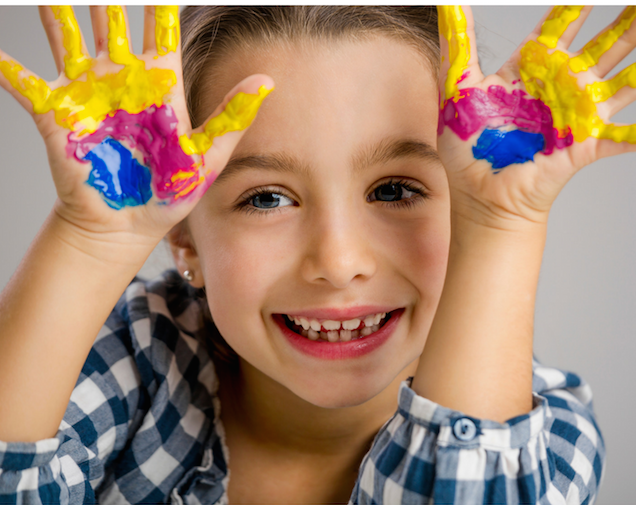
by PT-clc | Jan 23, 2018 | Creative Living, Creativity, Health & Wellbeing, Self-Care, Stress Management, Women in Business
With all the gloom, doom and uncertainty in the world, it’s more important than ever for us to “let go” of our worries and to connect with our inner child. What do I mean by “connecting with your inner child”?
Imagine what it was like when you had no cares or worries, when you felt loved, safe and secure and lived each day from a place of childlike wonder. I invite you to take yourself back to that time and place. What do you see and how do you feel?
I see myself playing with friends in nature; pretending we are pirates and digging for gold in the farmer’s field close to where I grew up. I see myself swinging so high and then jumping off a swing. I see myself running, jumping and feeling so free. I see myself swimming at the family cottage, back and forth between the docks. When I imagine doing each of those activities I feel light, carefree, empowered, creative, energized and curious.
So how can you connect with your inner child and with those feelings you felt as a child? One clue is when I play with my grandchildren. I now have 4, three years of age and under! On a recent visit I went for a walk with my 21- month old granddaughter. It was her first winter of experiencing snow and what it was like to walk in the cold. Initially she had a bit of trouble walking all bundled up in her cumbersome snowsuit. Before long she was almost running, so excited to be outdoors. I drew pictures in the snow and she kept saying “more, more.” I showed her how to blow snow off her mittens as it was too dry to make a snowman. I helped her make an angel in the snow. I tried to put myself in her shoes and see through her eyes of childlike wonder. It was so fun and energizing!
Another activity that connected me with my inner child was in the acrylic painting class I recently started. In the class the instructor encouraged us to try finger painting and to free paint without trying to paint anything special. It was an incredibly liberating experience! For several days after, I felt so connected to my creative side, easily designing a workshop and doing some writing. I felt like I was “in the flow”. My mind was clear and focused.
I really enjoy being in, on or by water. When I’m feeling stressed I find it therapeutic to walk to the ocean (which is close by) and lie on the rocks. When I do this I feel grounded and supported by Mother Earth. My worries fall away and I relax and feel embraced by this sacred space.
Here are a few suggestions of how you may connect with your inner child.
- Try finger painting with no agenda and notice how it makes you feel
- Is there a special nature place close to where you live? Visit it regularly. Bask in its beauty and notice how being there makes you feel
- Spend time with young children; notice and try to reconnect with your childlike wonder
- Spend some time at least once a week imagining a time or times when you felt loved and supported with no worries or cares. Feel those feelings and recall what you were doing at that time. Perhaps begin integrating those activities into your life. It could be a regular hike, walk, drawing …
- Create a sacred space in your home; a place for you that is comfortable and contains a few special reminders of your childhood; e.g. rocks, shells … . Commit to spending time in that space initially for 10 to 15 minutes three times a week and notice how you feel when there and the cumulative effect.
I believe that if we all took the time to reconnect with our inner child and let her or him “come out to play” on a regular basis, that there would be less conflict, less stress, more creativity and more collaboration in our lives, communities and workplaces.
I’d love to hear how you connect with your inner child and what you’ve noticed from that experience. Please share your experiences below so we can all learn and grow from each other.
If you’d like to learn more about how to Tap into and Express Your Creative Side I invite you to read chapter 5 in my #1 Best Selling book “Learning to Dance with LIfe” – https://pamela-thompson.com/books/

by PT-clc | Jan 9, 2018 | Change, Coping with Change, Creative Living, Leadership
The Art of Change Framework is a proven 5-step model for embracing change be it in yourself, your relationships, your workplace/organization. In a previous post I outlined the 5 steps in this model – https://pamela-thompson.com/strengthen-impact-world-dance-change/. In subsequent posts I identified the powerful practices associated with each step in the process. This article will focus on step 5 in the Art of Change Framework entitled Consciously Share Your Dance with the World.
We know that when we change, others around us notice these changes and either choose to follow us or resist the changes we are modelling. An example is personal growth work. If one partner in a relationship wants to learn and grow and begins reading about personal growth and attending workshops or receiving coaching to learn and grow, and their partner is not on the same wavelength, the partner who wants to maintain the status quo may feel threatened by the changes in the other’s behaviour. For example, having a spiritual connection when your partner is an atheist or becoming more assertive in conversations instead of not saying much or always acquiescing to the other partner’s wishes. Does this sound familiar? When we change, we influence those around us.
During step 5 in the Art of Change Framework, it is important to observe the positive changes in yourself, how others respond to you, and the positive impact you are having on your family, friends, communities and workplaces.
As a leader in an organization, you will notice the difference among people who either resist or embrace changes that you initiate. The tables below identify the typical differences between those who resist and those who embrace change.
What happens in Ourselves, Our Relationships and Our Workplaces when We Resist Change versus Embrace it?
OURSELVES
|
Resist
|
Embrace
|
| We view change as a threat |
We view change as an opportunity to learn and grow and as a creative process that opens us up to new opportunities
|
| We feel:
o Angry
o Depleted
o Low in energy
o Victimized
· The increased stress over time negatively impacts our health; can lead to chronic illness and negatively affect our career paths
|
We feel:
o Open
o Excited
o Energized
o Nonjudgmental
· Over time we are more relaxed, more flexible and open to creative ideas
· Our health may be positively impacted as we feel supported by those around us and that we are contributing to something greater than ourselves; may positively impact our career paths |
| In our interactions with others we:
o Are not totally present
o Are judgmental
o May be argumentative |
In our interactions with others we:
o Are present
o Are mindful
o Seek to understand and support others |
OUR RELATIONSHIPS
|
Resist
|
Embrace
|
| o Strained
o Reactive
o Judgmental
o Characterized by increased conflict
o We feel alone, victimized and that others don’t understand us |
o Open
o Responsive
o Curious
o Characterized by increased understanding, creativity and compassion
o We feel part of something and supported |
OUR WORKPLACES
|
RESIST
o Increased conflict – “us” versus “them” mentality
o Reduced morale
o Reduced engagement
o Little innovation
o Increased illness and absenteeism
o Negative impact on the bottom line |
EMBRACE
o Increased cooperation, collaboration and synergy
o Increased morale
o Increased engagement
o Creativity and Innovation
o Reduced absenteeism
o Positive impact on the bottom line |
Learning how to embrace change and understanding how we respond to it, is critical to positively influencing our families, friends, communities and workplaces. Learning and implementing the 5-step Art of Change Framework helps you understand how you respond to change and is a tool to support you and your team(s) to embrace it. In these challenging and uncertain times, now more than ever, we need proven processes to support individuals and leaders in communities and organizations to make a positive difference in the world.
What have you noticed in yourself, your relationships and/or your work environments when they are characterized by embracing versus resisting change? What aspects of the Art of Change Framework have you found most useful? Any new insights? I invite and welcome your comments below.

